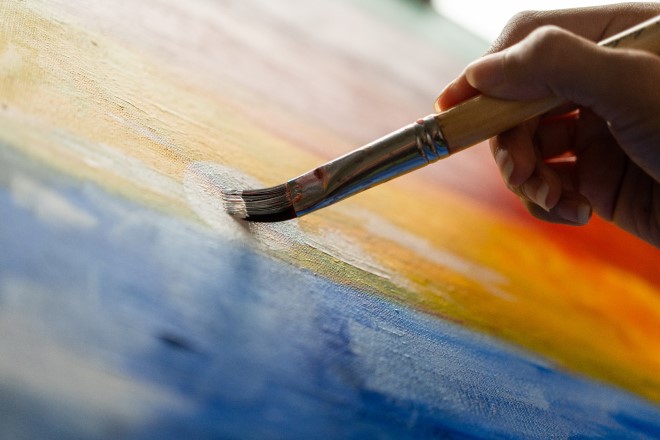
In recognition of National Art Day, the Daily Update is today (15 April) taking a look at the international trade in art.
While characterised by its beauty, the industry is not without risk for traders, with money laundering an ongoing challenge for traders and regulators.
Money laundering risk
A combination of cash purchases and buyer anonymity makes art an appealing commodity for those trying to move ill-gotten gains across borders. In fact, after introducing anti-money-laundering rules in 2010, Mexico’s art market fell an estimated 70%, with many suspecting that cartels were behind the previous trade.
One especially high profile case involved the former head of a Brazilian bank, who was imprisoned for over 20 years for committing fraud and money laundering offences. After assets were seized, several pieces of art were identified as missing from his collection.
An investigation conducted by American authorities, the Brazilian government and INTERPOL uncovered two pieces of art exported to New York from the Netherlands using false customs declarations claiming they were each worth US$100 – the more expensive of the two was in fact valued at $8m.
Freeports and customs warehouses
Freeports are special economic zones that benefit from customs and tax reliefs designed to stimulate trade and investment. They have been praised for providing a great boost to the economic growth of various countries, but there have also, historically, been concerns around the scope for criminal exploitation of their tax benefits.
Freezones allow site operators to offer warehouse storage solutions for goods that can be stored indefinitely without the payment of import duties and taxes. The goods are not in free circulation within the country where the freezone is located and they can easily be exported to other countries or freezone locations.
An EU report from October 2018 noted that the misuse of freeports in other countries had posed money laundering risks, as these warehouses had become popular for the storage of substitute goods such as art and jewellery.
The report added that customs and bonded warehouses, operated by private companies, can offer a similar degree of cover for criminals.
UK freeports
In the UK’s new freeports, these risks are being managed through a requirement for freeport operators to meet high trade and customs standards, says Suzanne Alecrim, an Academy special projects manager at the Institute of Export & International Trade.
She explains:
“Since 2021, the UK government has announced 12 freeports around the UK. Anyone who applies to HMRC to be authorised to operate a customs or tax site within a freeport must be an established UK business and must meet the security standards and be approved by HMRC before they can be designated.
“HMRC operates a trusted trader scheme and all operators must have AEO(S) authorisation or meet the AEO(S) standard to be approved. This involves HMRC checks to ensure the operator is legitimate and includes an appropriate record of compliance with customs legislation and tax rules, a satisfactory system of managing commercial and, where appropriate, transport records which allow appropriate customs controls and proven financial solvency.
“Freeports are subject to an annual security audit carried out by HMRC and Border Force which is reviewed by the Freeport Security Forum to make sure security measures continue to meet the high standards expected of freeport operators.
“These measures ensure that operators continue to operate with the highest level of security and this goes a long way to ensuring the future success of freeports in the UK.”
Compliance
In recognition of the risks the industry poses, governments are introducing greater regulation across the art world.
In the UK, businesses operating as ‘art market participants’ – defined as either freeports storing at least €10,000 worth of art, or a business or individual transacting over €10,000 in art deals – must now register with HMRC and ensure they comply with anti-money laundering rules.
Similar to how the banking sector has been required to take on strict measures to minimise the risk of illicit funds crossing the border, actors in the art market must carry out similar checks.
These include conducting a formal risk assessment, nominating a compliance officer, putting policies and procedures in place at a company-wide level, carrying out customer due diligence and reporting suspicious purchases.
The stats
In their most recent annual, Art Market Report, UBS and Art Base found that 2023 saw international art sales dip, following several years of strong post-pandemic recovery.
Now valued at US$65bn, the decline is attributed to broader macro-economic conditions like high global inflation rates and increasing interest rates.
The report notes that the US remains the world’s leading art market, accounting for 42% of sales by value, although this marks a decline of 3% per year.
China – when counted as both the mainland and Hong Kong – overtook the UK to become the second-largest art market, with its share rising to 19%. The UK’s share stands at 17%, while France remains in fourth at 7%.
Of the leading markets, only China grew last year, rising by 9% to $12.2bn following the end of its strict lockdowns in January 2023.
Online boom
One area escaping this overall decline was online sales, rising to $11.8bn in 2023, up 7% on 2022.
Higher value sales still take place predominantly offline, as the report found that over 95% of transactions deriving from online auctions were for less than $50,000. Ultimately, 2023 saw a greater number of lower-value sales.
There was no repeat of the record-breaking $1.5bn sale of Microsoft co-founder Paul Allen’s collection at Christies in New York, however.



